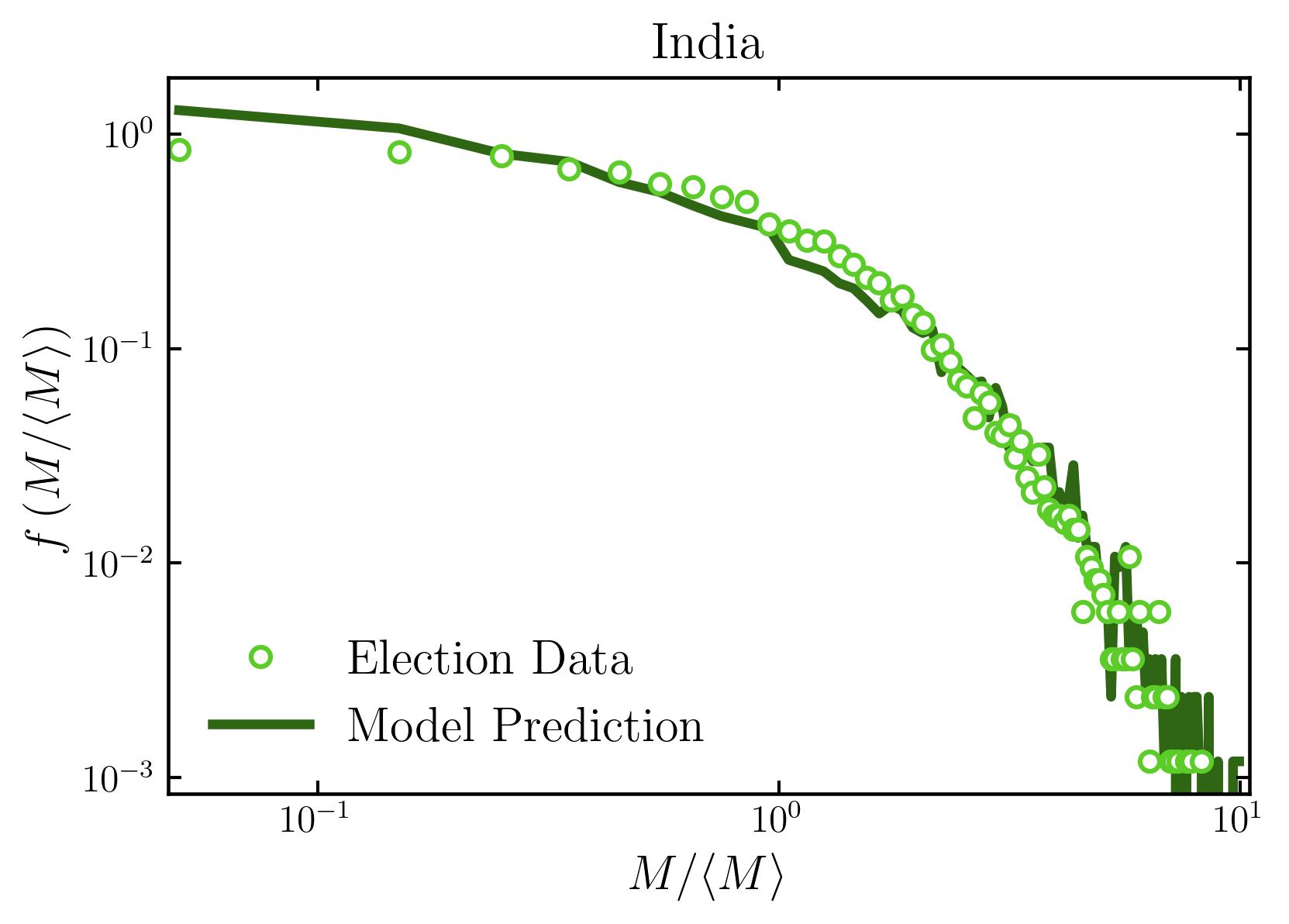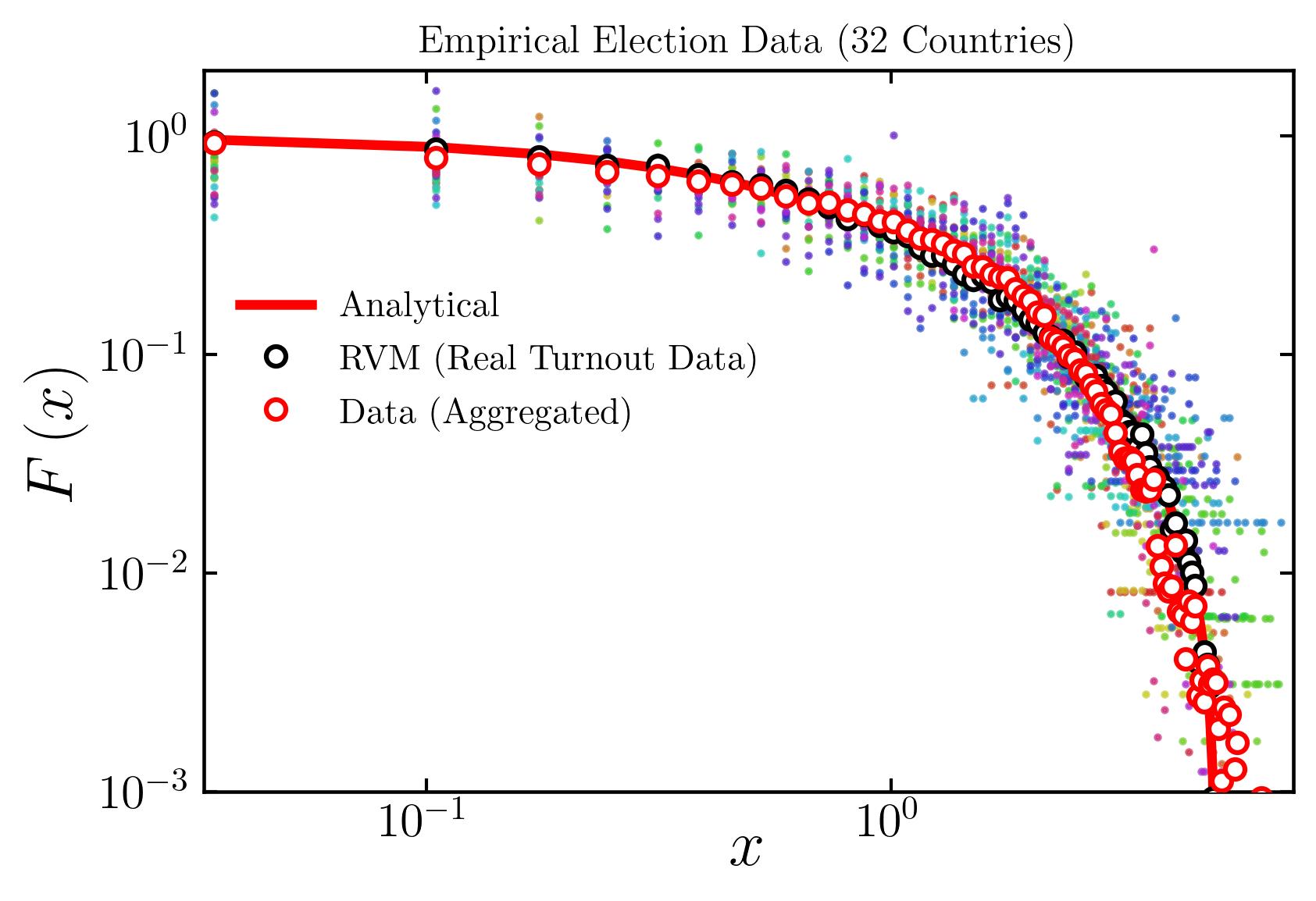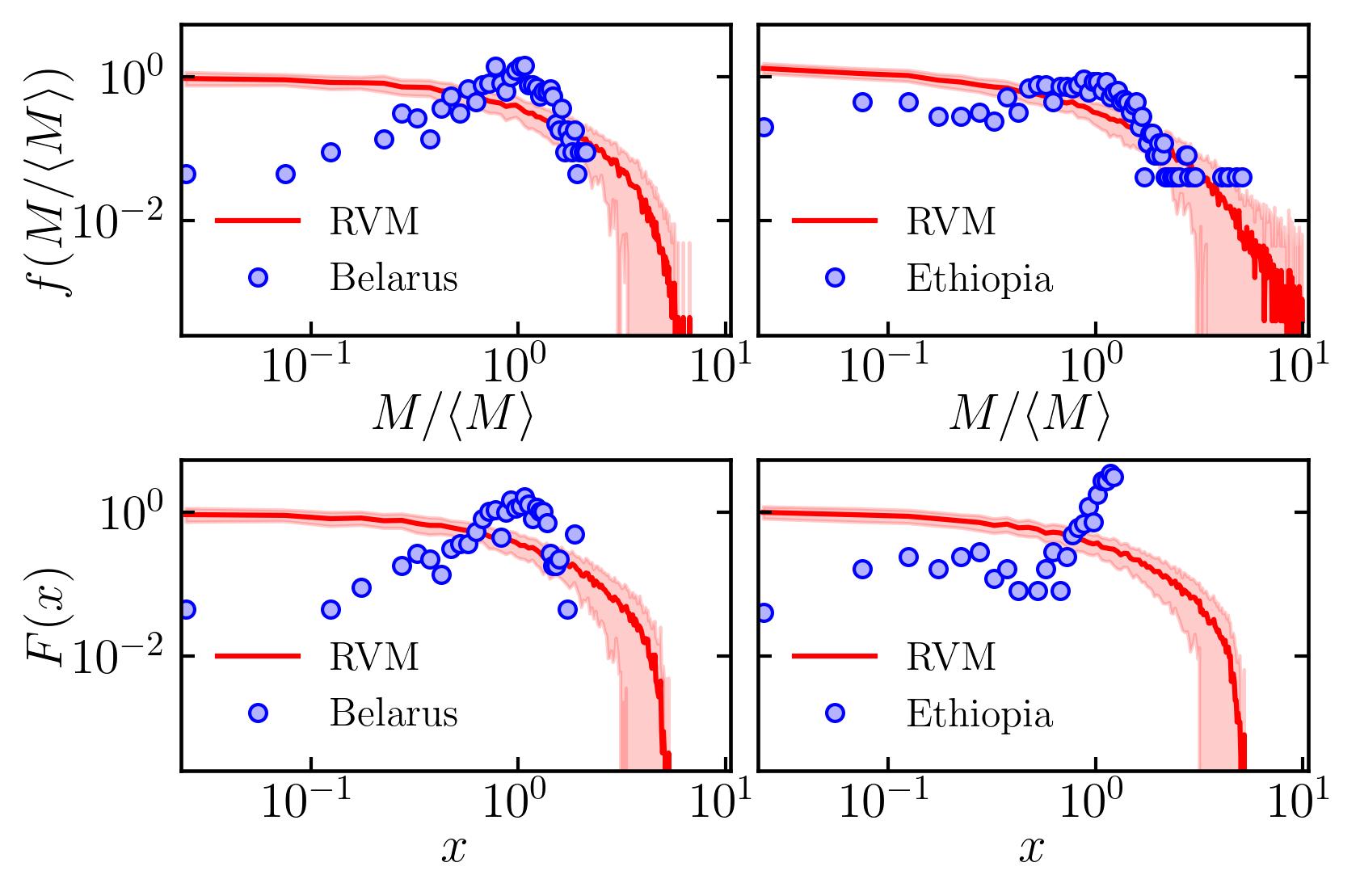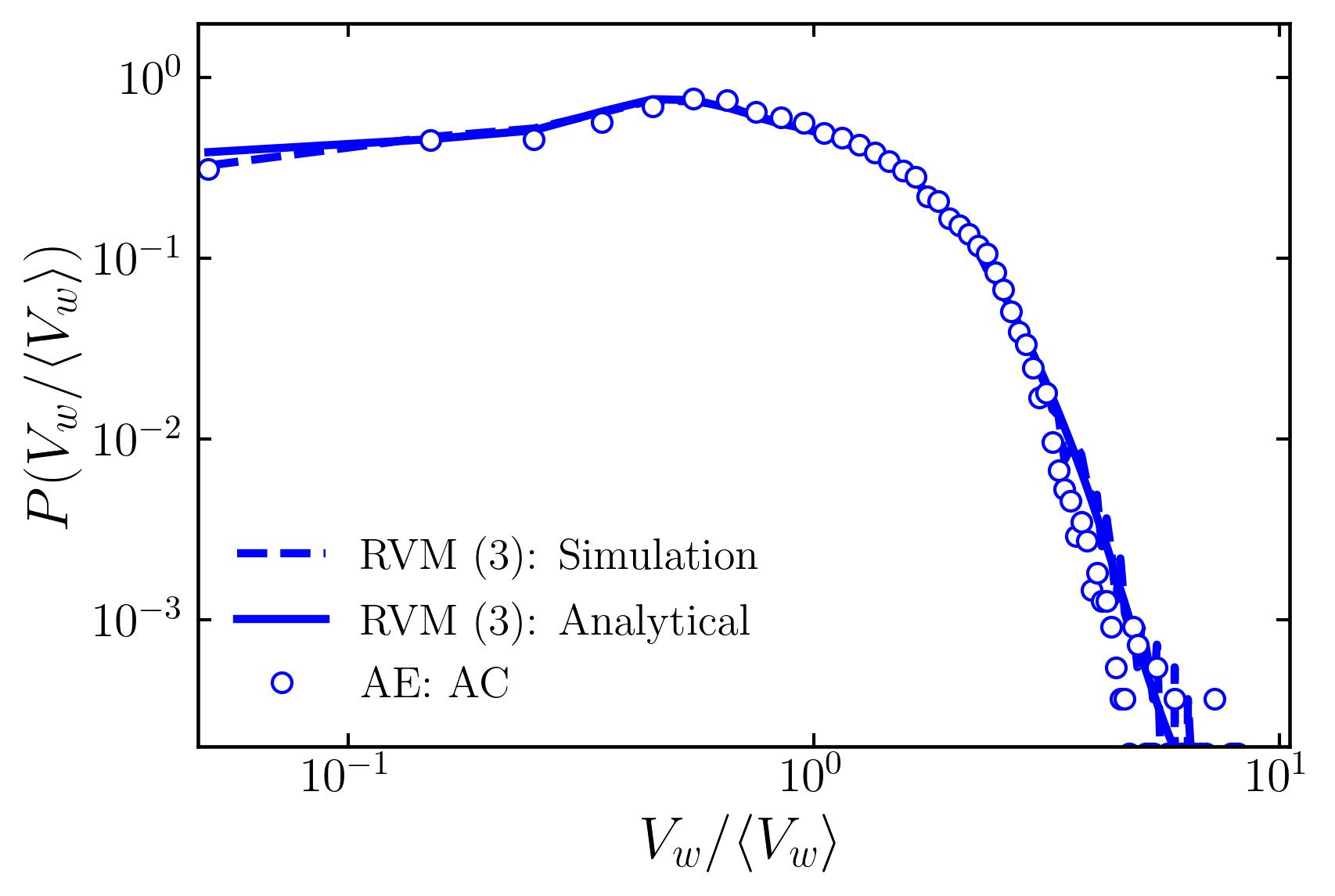Election Insights
Discover scientific patterns in election data through interactive visualizations and research findings.
Key Research Findings
Can we predict margin?
In any election, an informative indicator of the degree of competition and the extent of consensus is the victory margin. A vanishing margin signifies tight competition and a divided electorate, whereas large margins indicate a decisive mandate.
Using the random voting model (RVM), we can predict the distribution of margins (appropriately scaled) when the turnout data of any election is provided.

What is universality?
Imagine uncovering patterns so robust they hold true across the globe, regardless of country, culture, or rules. This is the essence of universality — simple, universal trends hidden within the chaos of complex systems like elections.
While margin of victory is an indicator of electoral competition, the margin-to-turnout ratio (specific margin) captures the competitiveness of an election irrespective of electorate size.

How to detect electoral malpractice?
Voter turnouts drive the margin of victory and the scaled specific margin distributions follow a robust universal trend. Any significant deviation from this expected pattern can serve as a red flag, indicating potential fraud or manipulation.
For instance, elections in Ethiopia and Belarus exhibited clear deviations from the universal norm, aligning with reports from international media and civil organizations about potential electoral malpractices.

Can we predict vote distributions?
The random voting model accurately predicts the scaled margin distribution from turnout data alone. This leads to a question: Does voter turnout encode information about other key electoral statistics?
Using election data from India spanning several decades and electoral scales, we discover that the scaled distributions of votes received by winners and runners-up can indeed be predicted with remarkable accuracy using RVM and voter turnouts.
